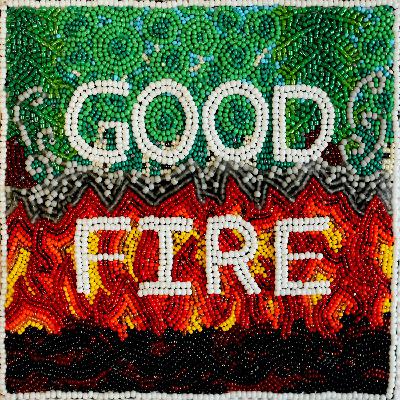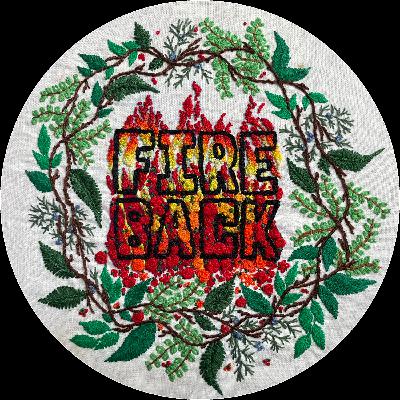The Social Dynamics of Fire Management with Vanessa Luna-Celino
Description
Good Fire Podcast by Amy Cardinal Christianson and Matthew Kristoff
Stories of Indigenous fire stewardship, cultural and social empowerment and environmental integrity
The Social Dynamics of Fire Management with Vanessa Luna-Celino
Episode highlight
In this episode, Vanessa Luna-Celino talks about how community-based fire management is the way to sustaining forests.
Resources
Documentary - Farmers and Fire: Local efforts in dealing with wildfires in Peru
Forbidden fire and the potential role of community-based fire management in the Peruvian Andes
Sponsors
Indigenous Leadership Initiative
Quotes
16.20 - 16.23: “Not every person in these peasant communities interacts with fire in the same way. There are of course power relationships and power dynamics; there are different needs of fire.”
29.57 - 30.12: “Part of my research also has to do with understanding the different narratives of what to do with fire and the role of fire in the landscape and for rural wellbeing.”
Takeaways
Meet Vanessa Luna-Celino (02.58)
Vanessa recently completed a PhD in Interdisciplinary Ecology from the University of Florida. She studied biology in her hometown, Lima, Peru, and then became interested in the social dimensions of conservation. Her PhD focussed on community-based fire management in the Peruvian Andes. She points out that with climate change, wildfires have become more commonplace in Peru. But with large populations living in the Andean and coastal regions, wildfires pose a threat.
The people of the land (05.26)
Vanessa has been working with communities who see annual wildfires ranging from 10 to 500+ hectares. While these fires may not be large, the territory they emerge in has been occupied for millennia, starting with the Inca empire to present- day Indigenous and mestizo (a mix of European and Indigenous descent) farmers. Most of this high Peruvian Andean landscape is filled with rural communities, called campesino communities, that collectively own and manage the land.
Indigenous communities of Peru (8.20)
Peru has a population of more than 30 million people, with a few million in the Andean region. The Indigenous groups who live in the south of the Andes are the Aymara and Quechua. In the Amazonian region, more than 60% of the territory has over 50 Indigenous groups, some only with a population of 500-1000 who speak their Indigenous language. The Indigenous group that has the most inhabitants in the country are the Quechua, who have been a part of Vanessa’s research.
Finding Fire (09.22)
Vanessa worked as a biologist at a biological station for many years in the Peruvian Andes and Amazon. Sometimes, a fire in the Quechua community on one side would spread into the national park on the other side and into the 600 hectares of biological station land, and she observed a complex relationship between the Indigenous Quechua group and the firefighters and park rangers, with farmers and cultural burning being blamed. She then began studying the cultural aspects of Indigenous peoples using fire.
Complex dimensions of fire use (12.57)
Vanessa was part of the Tropical Conservation and Development Program at the University of Florida which encourages researchers to partner with local communities, training them in a group on collaboration, conflict management, and Indigenous rights. She went back to her Indigenous coworkers and the surrounding community at the biological station with curiosity, wanting to simply begin her research by spending time with them and observing their approaches to and practices of fire.
Differences in community practices (15.32)
Vanessa considers herself blessed to have had the funding and time to spend a month each in every community over 3 fire seasons. She observed that different community members interact with fire in different ways, with farmers in remote areas using fire more than the ones in the main village. The community members slowly became more open when talking to Vanessa about their practices, once they understood she was there to learn and not instruct.
The pros and cons of elevated farms (17.19)
Vanessa found that rural areas need to use more fire due to the elevation and highly rugged landscape. These communities traditionally took advantage of the elevation differences to grow their traditional crops, with over 100 varieties of potatoes, and grapes and corn. Elevated farms that are surrounded by vegetation that has overgrown are the most vulnerable to having runaway fires, and it’s harder for them to access help to put out those fires.
Approaches to fire (20.15)
Vanessa notes that while Indigenous communities do use fire for rituals on a small scale, they don’t use it to manage the land. They learnt to use fire in their farms from the Spanish for agricultural purposes, to renew grass or get rid of residue. What is seen today on the farms is a blend of Indigenous and European agricultural practices. Communities see fire use and firefighting as a masculine task, but urban populations see more women participating. However, more Indigenous female participation is needed.
Colonization of mindsets (24.53)
Vanessa observes that the community dynamics are patriarchal and “that may have to do with Spanish introduction of ways of doing things”. Men are considered the head of the household, and she believes that is something that needs attention because it talks about different vulnerabilities of fire in terms of gender dynamics which applies to the use of fire. The families want to use the land and fire, but it is the man who has the most active role, and the wife and children support the man.
Burn, one way or another (27.48)
Vanessa describes the high Peruvian Andes as highly humanized because people have been on the land for 15,000 years. There are Puna grasslands in the high-elevation regions, some patches of Andean forest, and clout forest as one gets closer to the Amazon. The communities she works with live in the part of the highlands close to the Amazon and have collaborated for the past 20 years with environmental organizations that have promoted firefighting brigades and park rangers in the communities. This creates an interesting dynamic between protecting the forests vs using them for water and ecosystem services.
Community land use (30.39)
Vanessa shares that a large portion of Peruvian territory is owned and collectively managed by rural Indigenous communities who have a lot of autonomy in decision making and governance. In the community she collaborated with, there are 500 families, and the land belongs to the community, with one member of each family attending the bi-monthly official meetings. They can request a piece of land to farm but must comply with the requirements of the land use established in that community.
Strong collective action (32.49)
The Indigenous communities have different committees for fire and water, to ensure those resources are being managed well for the benefit of the entire community. The first response to a wildfire is from the communities because they are remote, and they organize themselves to successfully put it out most of the time. So, the most efficient way is to enable these communities with training and equipment, so they are most prepared to rapidly respond in the event of a wildfire.
Playing with fire (35.02)
Vanessa describes the complex relation with external parties in the situation. While everyone agrees on training to be able to respond to fire, there isn’t an agreement on the rights of using fire. Community members agree on the need to use fire since it has been used on the land for a long time, but Peruvian Forestry Law prohibits the use of fire, even for cultural purposes. So, external parti
















